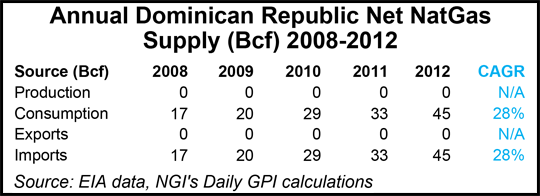Another LNG Export Terminal Planned for Louisiana
A unit of Southern California Telephone & Energy (SCT&E) has acquired land on the Calcasieu Ship Channel in Louisiana for development of a $2.4 billion liquefied natural gas (LNG) liquefaction and export terminal. The project joins about a dozen others in the Pelican State to export liquefied domestic natural gas.

SCT&E LNG LLC would develop the terminal on a 232-acre site on Monkey Island in Cameron Parish, LA. Less than three miles from the Gulf of Mexico, the site has 3,500 feet of deepwater frontage on the channel and 4,000 feet of frontage on the Calcasieu Pass/Cameron Loop at the northern boundary of the property, according to SCT&E CEO Greg Michaels.
“The area is one of the most robust natural gas transportation networks in North America and is adjacent to the convergence of several major interstate and intrastate natural gas pipelines,” the company said.
SCT&E LNG said it intends to build, own and operate four LNG trains, each capable of producing nearly 1 million tonnes per annum (mtpa) of LNG for a total of 4 mtpa or the liquefaction of approximately 540 MMcf/d of natural gas. The site will be able accommodate large LNG vessels and may be used as a refueling station for newly converted or future vessels using LNG as a fuel source.
Natural gas is to be treated at the Monkey Island site, liquefied, stored and then loaded onto LNG carriers for export to overseas customers in countries that have a free trade agreement (FTA) and/or non-FTA status with the United States. The site will house multiple LNG storage tanks, which may be used for LNG bunkering and fueling of transportation ships for distribution of LNG. SCT&E LNG said it will submit applications to the U.S. Department of Energy for permission to export LNG to FTA and non-FTA nations.
The decision to build an LNG facility was originally driven by an agreement with the government of the Dominican Republic for development of a 400 MW natural gas-fired power plant. The Dominican Republic power plant requires about 500,000 tonnes per annum of LNG allowing SCT&E LNG to sell the remaining 3.5 mtpa from the plant’s planned capacity to other LNG offtakers.
Being an island nation with no production of its own, the Dominican Republic is completely dependent upon LNG imports for its natural gas supply. The country uses less gas in a year (45 Bcf in 2012) than the United States consumes in a day (70 Bcf/d in 2012), but its consumption has grown at a 28% annual clip since 2008.
“With the shutdown of the Fukushima nuclear power plant and other nuclear phase-outs throughout Europe; China’s recent announcement for targeted air pollution reductions requiring the use of LNG; and the increasing international demand for clean-burning natural gas, the United States is in a position to become the powerhouse to LNG markets worldwide.” Michaels said. “Owning an LNG facility allows SCT&E to manage the availability of LNG for their own projects, allowing the company to win contracts for the development and ownership of gas-fired power plants worldwide.”
Southern California Telephone Co., doing business as SCT&E, is a spinoff of Wholesale Airtime Inc., which Michaels established in 1994. SCT&E offers voice, data and internet services and provides renewable energy and energy efficiency solutions. SCT&E is a California electric service provider (ESP) and has U.S. Federal Energy Regulatory Commission authority to buy and sell energy nationwide in both the wholesale and retail markets. SCT&E is also involved in international energy generation and oil and gas projects.
Separately, another Louisiana LNG project last week announced that it had secured financing.
Louisiana LNG Energy LLC (LLNGE) secured funding from an affiliate of ArcLight Capital Partners LLC for LLNGE its mid-scale LNG export terminal under development along the Mississippi River. The project, expected to be online in late 2017, would have export capacity of 2 mtpa and deepwater access for very large gas carriers.
“The ArcLight funding agreement is a significant step in advancing the LLNGE project. The addition of their team provides LLNGE additional experienced resources to continue moving the project forward with all phases of the project scheduled for completion in late 2017,” said LLNGE CEO Jim Lindsay.
The facility is being developed in Plaquemines Parish, LA, to serve export markets with low-cost power generation fuels, and domestic markets delivering emissions-compliant fuels as an alternative to diesel fuel.
© 2024 Natural Gas Intelligence. All rights reserved.
ISSN © 1532-1231 | ISSN © 2577-9877 |
